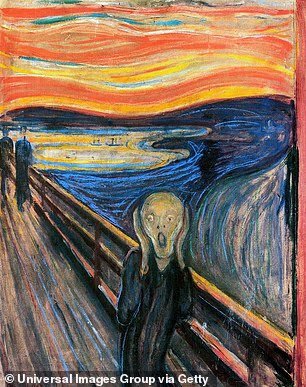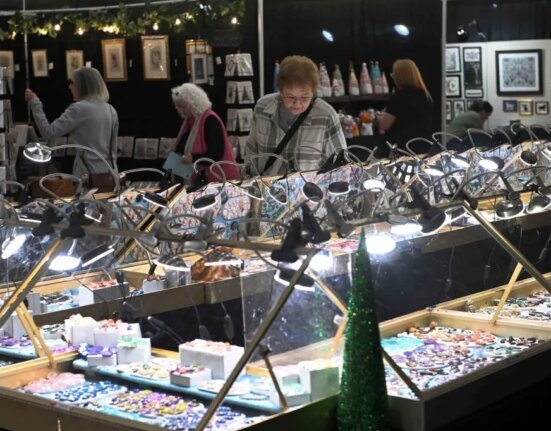How To Art by Kate Bryan Hutchinson Heinemann £16.99, 336pp
The curator Kate Bryan didn’t come from a family steeped in art. By the time she went to university to study art history – after learning at an education fair that the subject existed – she’d been to a gallery only twice. But she loved making art and reading about it, and eventually she began working in the industry, learning, she admits, how and when to hide her working-class roots.

Don’t scream: there’s nothing to fear about art
Her book How To Art, which is engagingly illustrated by David Shrigley, is intended as a guide to art in general. Its scope is cheerfully broad: Bryan covers everything from where to buy art to how to keep it in good condition (UV-resistant glazing, she says, is often worth it). Many of us suffer from ‘art anxiety’, she writes – we don’t know what to say about art or how to feel about it; but art is for everyone, she insists, and can bring real joy.
Much of the book is given over to pragmatic considerations such as how to buy art cheaply. Open studio days are good, she says (though wrap up warm), as are museum shops, art fairs, the Royal Academy Summer Exhibition and graduate shows that are put on in June by the big art schools. Though many galleries don’t put their prices on display, you can just ask. If you can’t bring yourself to squawk ‘How much is this?’, try the more worldly ‘What’s the price point of these works?’ Accessing art is easier than ever: the major British museums are free, and there is a wealth of information online. Bryan also offers more sideways routes in, from podcast and film recommendations (she’s a sucker, like me, for The Thomas Crown Affair) to magazines and documentaries. Though commercial galleries can be unpleasant to visit – particularly if you have to ring a doorbell – they can be worth it, she says. Auctions are also worth a look, as they offer an opportunity to see works that will often disappear into the ether when they’re bought.
Bryan has advice about how to enliven galleries for children. She suggests writing a checklist of things for them to spot: historic collections will generally feature a dog, a lamb and a sad-looking woman, while contemporary collections will feature a painting with dots in it, a big blob – and a sad-looking woman.
Some tips are rather obvious. To develop a salon wall in your home, Bryan suggests starting from the centre and going outwards, and putting larger paintings in the middle. Well, yeah. She also doesn’t really tackle the reason that many people dislike lots of modern art: because they think it’s bad. A frank explanation as to why, say, the Turner Prize has become so infuriatingly disconnected from what ordinary people think of as good art would have been gratefully received.
Still, this is a perkily written and genuinely helpful book. I particularly liked Bryan’s guide to talking to artists themselves. Rather than saying ‘Your work is exactly like X’s work’, try ‘I see something of X in your work – are they an inspiration for you?’ And instead of growling ‘This looks like it didn’t take very long’, say ‘This has such a fresh/energetic/spontaneous quality to it.’
She even suggests an alternative to ‘Hmmm’, which is what many people say in front of a piece they hate or don’t understand. Instead, she writes, try admitting ‘I am not sure how to express what I think’ – or else boldly move the conversation on by asking ‘Are many of your friends artists?’
Leaf Arbuthnot







